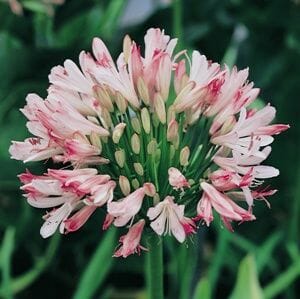Letting Loose the Secret to Successful Agapanthus Cultivation: Advice for a Flourishing Garden
In the realm of gardening, cultivating agapanthus successfully requires a critical strategy that incorporates various facets of plant care. With cautious attention to information, one can unlock the keys to supporting these magnificent blossoms, bring about a garden that prospers with charm and vibrancy. By comprehending the subtleties of agapanthus growing, one can develop a setting where these plants grow and flower generously. In the complying with discussion, we will certainly explore essential pointers and tricks that will certainly direct you in the direction of a prospering agapanthus garden, using understandings into ideal practices, soil problems, sprinkling techniques, and much more.
Growing Agapanthus: Best Practices
When planting Agapanthus, appropriate dirt prep work is necessary for guaranteeing successful growth and development of these stunning blossoms. Agapanthus, frequently referred to as Lily of the Nile or African lily, flourishes in well-draining dirt with a slightly acidic to neutral pH level - Agapanthus. Before planting, it is critical to modify hefty clay dirts with raw material such as compost or peat moss to enhance drainage and offer crucial nutrients for the plants
To plant Agapanthus, pick a location that gets full sunshine to partial shade, as this will certainly advertise healthy and balanced growth and plentiful blooming. Dig an opening twice the size of the plant's root ball and place the Agapanthus at the exact same depth it was formerly growing. Carefully backfill the opening with soil, weighing down strongly to remove any kind of air pockets around the roots.
Water the recently planted Agapanthus thoroughly and remain to maintain the dirt uniformly wet, especially throughout the plant's energetic growing season. Agapanthus. Using a well balanced plant food once a month can additionally support the plant's development and flowering. By adhering to these ideal techniques for planting Agapanthus, you can develop a sensational screen of these exciting flowers in your yard
Suitable Dirt Conditions for Agapanthus
For optimal growth and flowering success of Agapanthus plants, making sure the dirt problems are excellent is important. Agapanthus grows in well-draining dirt with a somewhat acidic to neutral pH level ranging from 6.0 to 7.0. This kind of soil enables sufficient water drainage, preventing waterlogging which can bring about root rot. To improve dirt drainage, consider including natural issue such as compost or peat moss when preparing the growing site. Additionally, Agapanthus favors dirt that is abundant in nutrients, so including a well balanced plant food during the expanding season can advertise healthy development and vivid blooms.

Watering and Fertilizing Tips
To ensure healthy development and vivid blossoms, correct watering and feeding methods are essential for successful Agapanthus farming. Agapanthus plants profit from routine watering, particularly throughout the growing period.
When it involves feeding Agapanthus, a balanced plant food with equivalent components nitrogen, phosphorus, and potassium can be used in the spring to advertise healthy development and blooming. Slow-release fertilizers are suitable for supplying nutrients slowly over an extensive period. Stay clear of over-fertilizing, as this can lead to too much vegetation growth at the expenditure of flowers.
Additionally, incorporating natural issue like garden compost into the soil can enhance nutrient degrees and enhance dirt framework, helping in the overall wellness of the Agapanthus plants. By complying with these watering and fertilizing suggestions, gardeners can guarantee their Agapanthus plants grow and create spectacular displays of blossoms.
Pruning and Deadheading Methods
Proper trimming and deadheading methods play an essential duty in preserving the wellness and aesthetic appeals of Agapanthus plants, complementing the crucial methods of watering and feeding for successful farming. Pruning Agapanthus entails removing spent blossom heads, dead or yellowing fallen leaves, and general shaping of the plant to advertise much better development. Deadheading, the process of eliminating discolored blossoms, not only improves the plant's look but additionally encourages additional flowering.
When deadheading Agapanthus, it is advisable to snip off the flower stem at the base utilizing sharp, tidy shears. This process reroutes the plant's power from seed manufacturing back into root and foliage development, advertising a healthier and extra robust plant. Regular deadheading can extend the flowering duration of Agapanthus and avoid self-seeding, which can cause navigate to this site congestion.
In terms of trimming, Agapanthus typically gain from a light trim after blossoming to clean up the plant and motivate fresh growth. Cutting down the spent blossom stems and getting rid of any dead or broken vegetation aids maintain the plant's vigor and general appearance. However, it is vital to prevent reducing right into the crown of the plant, as this can damage its wellness.

Protecting Agapanthus From Vermins and Diseases
Implementing efficient parasite and illness management methods is critical to securing the health and wellness and vitality of Agapanthus plants in farming. One typical bug that influences Agapanthus is the Agapanthus borer, a caterpillar that tunnels into the plant, triggering damage to the blossoms and leaves.
In addition to parasites, Agapanthus are at risk to diseases such as origin rot and fungal fallen leave spots. These problems can often be stopped by ensuring proper water drainage and preventing overwatering. If signs of condition show up, impacted parts of the plant should be immediately removed to stop further spread. Fungicides might also find out be used as a therapy procedure, adhering to the supplier's guidelines thoroughly. By staying cautious and attending to parasite and illness problems without delay, gardeners can help their Agapanthus flourish and thrive.

Verdict
To conclude, successful growing of agapanthus requires appropriate planting methods, suitable dirt problems, sufficient watering and fertilizing, routine trimming and deadheading, and protection from illness and bugs. By adhering to these tricks and ideas, garden enthusiasts can guarantee a prospering garden full of lovely agapanthus blossoms. Agapanthus. Keep in mind to preserve constant treatment and attention to detail to promote the wellness and longevity of these spectacular plants
When growing Agapanthus, correct dirt prep work is necessary for guaranteeing successful development and growth of these beautiful flowers.Water the newly grown Agapanthus completely and proceed to keep the soil evenly wet, specifically during the plant's energetic expanding season.For ideal development and great site blooming success of Agapanthus plants, ensuring the soil problems are excellent is vital. When hair transplanting or planting Agapanthus, ensure the dirt is well-prepared to provide the required foundation for the plants to develop themselves efficiently. One common insect that affects Agapanthus is the Agapanthus borer, a caterpillar that passages into the plant, triggering damages to the blossoms and leaves.